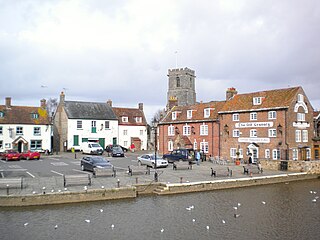
The River Frome is a river in Dorset in the south of England. At 30 miles (48 km) long it is the major chalkstream in southwest England. It is navigable upstream from Poole Harbour as far as the town of Wareham.

Corfe Castle is a village and civil parish in the English county of Dorset. It is the site of a ruined castle of the same name. The village and castle stand over a gap in the Purbeck Hills on the route between Wareham and Swanage. The village lies in the gap below the castle, and is some eight kilometres south-east of Wareham, and the same distance west of Swanage. Both the current main A351 road from Lytchett Minster to Swanage and the Swanage Railway thread their way through the gap and the village.

Purbeck was a local government district in Dorset, England. The district was named after the Isle of Purbeck, a peninsula that forms a large proportion of the district's area. However it extended significantly further north and west than the traditional boundary of the Isle of Purbeck along the River Frome. The district council was based in the town of Wareham, which is itself north of the River Frome.

Church Knowle is a village and civil parish on the Isle of Purbeck in the county of Dorset in the south of England.

Swanage railway station is a railway station located in Swanage, on the Isle of Purbeck in the English county of Dorset. Originally the terminus of a London and South Western Railway (L&SWR) branch line from Wareham, the line and station were closed by British Rail in 1972. It has since reopened as a station on the Swanage Railway, a heritage railway that currently runs from Norden station just north of Corfe Castle to Swanage station. It now also runs to Wareham on certain services, but not on regular services due to signalling problems.

Herston Halt railway station is a railway station located at Herston near Swanage, on the Isle of Purbeck in the English county of Dorset. It is an intermediate station on the Swanage Railway, a heritage railway that currently operates from Swanage to Norden.
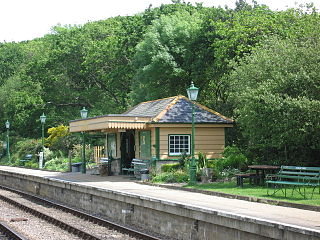
Harman's Cross railway station is a railway station located in the village of Harman's Cross, on the Isle of Purbeck in the English county of Dorset. It is an intermediate station on the Swanage Railway, a heritage railway that currently operates from Swanage to Norden.

Corfe Castle railway station is a railway station located in the village of Corfe Castle, in the English county of Dorset.

Norden railway station is a railway station located one mile to the north of the village of Corfe Castle, on the Isle of Purbeck in the English county of Dorset. It is situated on the Swanage Railway, a heritage railway that operates over the former London and South Western Railway line from Wareham to Swanage. Norden is the northern terminus of the railway's steam service from Swanage, and an intermediate stop on the railway's diesel hauled service that connects Swanage with the national rail network at Wareham station.

The Middlebere Plateway, or Middlebere Tramway, was a horse-drawn plateway on the Isle of Purbeck in the English county of Dorset. One of the first railways in southern England and the first in Dorset, the plateway was built by a wealthy Irish Merchant based in London Benjamin Fayle, to take Purbeck Ball Clay from his pits near Corfe Castle to a wharf on Middlebere Creek in Poole Harbour, a distance of some 3.5 miles (5.6 km).
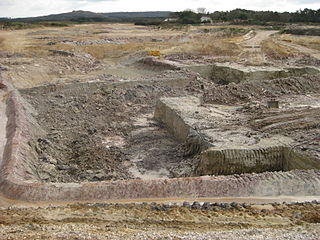
Purbeck Ball Clay is a concentration of ball clay found on the Isle of Purbeck in the English county of Dorset.
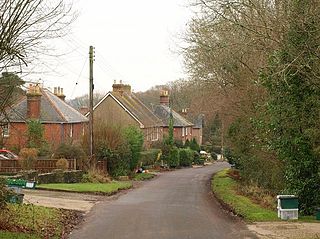
Ridge is a village in the English county of Dorset. It is situated on the south bank of the River Frome, about half a mile due south east of the town of Wareham.

The Swanage Pier Tramway was a narrow gauge tramway in the port town of Swanage, in the English county of Dorset. It opened about 1858 and closed in the 1930s.
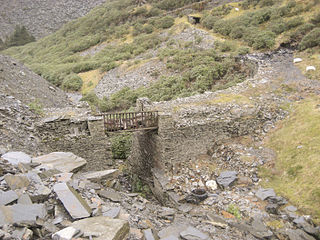
Some industrial narrow-gauge railways in the United Kingdom and the Isle of Man were primarily built to serve quarrying, mining, and similar industries. Some of these narrow-gauge railways offered passenger services for employees or workmen, but they did not run public passenger trains. They are listed by the primary industry they served.
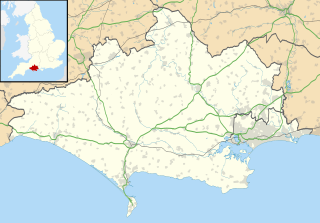
Furzebrook is a small village on the Isle of Purbeck, in the county of Dorset in the south of England. It is about 2 miles (3.2 km) south of Wareham and 2 miles (3.2 km) northwest of Corfe Castle, and is in the civil parish of Church Knowle.
This article is about the rolling stock of the Swanage Railway.

The Purbeck Mineral and Mining Museum exists to preserve and interpret the historic extractive industries in ball clay mining in the Isle of Purbeck. The museum is located adjacent to Norden station on the Swanage Railway and is open from the end of March to the end of September on weekends, some weekdays and Bank Holidays.
Roger Wakeley Kidner was a railway enthusiast and noted publisher whose imprint, The Oakwood Press, published many of the earliest books on British narrow-gauge railways.





